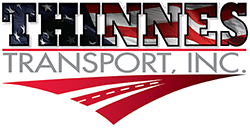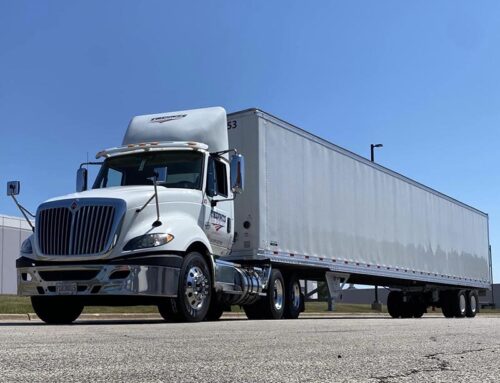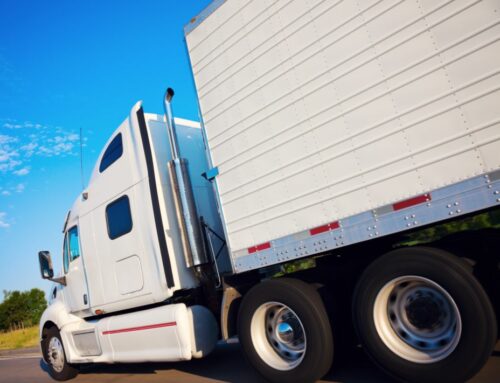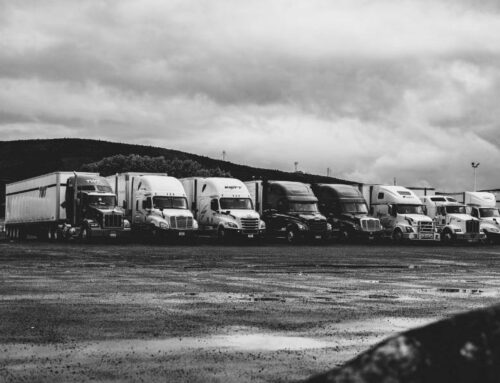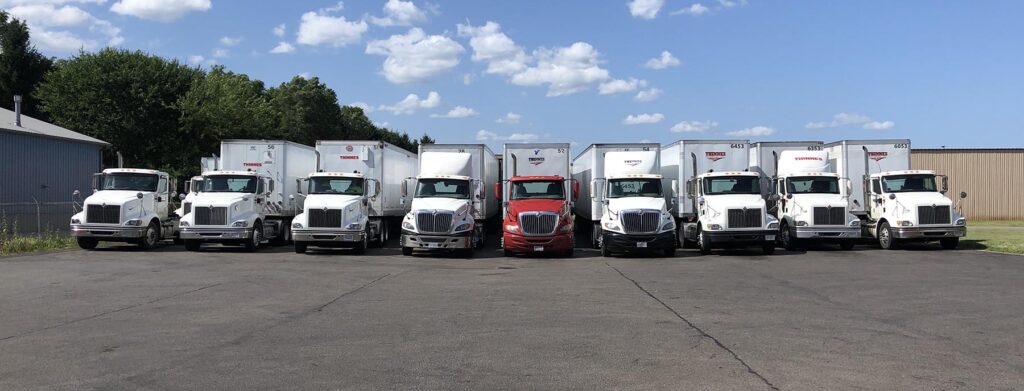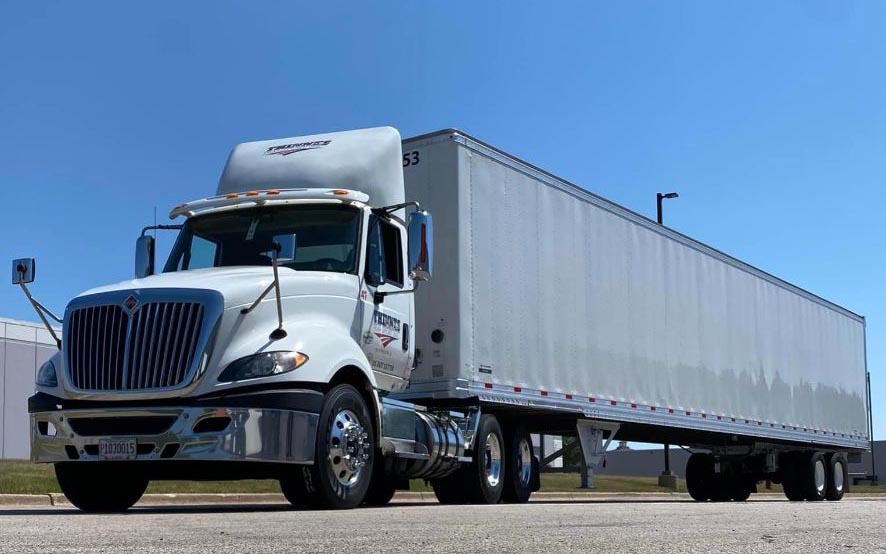Dependable, High-Service Level Full Truckload Carriers
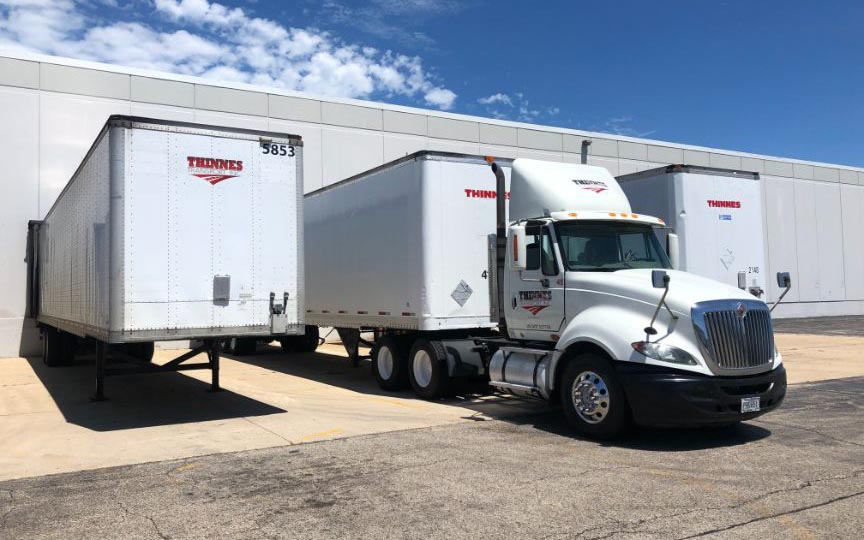
According to the American Trucking Association, over 70% of all freight transported in the United States is moved via truckload carriers. This statistic reflects how integral a dependable, high-service level truckload carrier is to efficient and cost-effective transportation of goods. To ensure delivery efficiency and customer satisfaction, there are several key factors that these companies must address:
- Driver time – Truckload carriers should establish reasonable timeframes for drivers so they can safely deliver the load on time without compromising their well-being or driving past legal limits.
- Quality control – Regular quality checks should be part of daily operations to ensure customers receive undamaged products in working order.
- Communication – Establishing clear communication with customers from start to finish helps reduce confusion and miscommunication during transit.
By utilizing sophisticated technologies such as GPS tracking systems, real-time analytics, two-way messaging capability between drivers and dispatchers, and automated documentation processes—high service level truckload carriers help streamline the transportation process while maintaining reliable communications for both shippers and receivers throughout the journey. With the right combination of technology solutions in place, businesses can ensure that services and transportation of goods are quickly delivered across long distances at an affordable rate.
Designated Truckload And Freight Share Space
Designated truckload and freight share space is a type of transportation system that can be utilized by companies to move goods from one place to another in an efficient manner. This form of shipping has become increasingly popular due to its numerous benefits, including cost savings, reliability and flexibility. Through designated truckload and freight share services, truckload shipping is made more accessible for businesses seeking timely delivery with minimal costs for both them and the customers.
The key incentives of designated truckload and freight share space are as follows: Firstly, it provides convenience for customers as they have access to reliable transportation options without the need for individual carriers or renting trucks; Secondly, this method allows companies to save money on their shipments since multiple loads are combined into one shipment; Thirdly, the process also ensures that goods remain safe while in transit through established guidelines regarding loading capacities and distribution networks.
In addition to providing cost savings and convenience, designated truckload and freight share space helps firms maintain delivery efficiency. By consolidating shipments into fewer vehicles, customers benefit from improved mileage rates which result in quicker deliveries at lower costs. Furthermore, increased visibility across supply chains enables accurate tracking of shipments so that customers know exactly when their products will arrive. As such, these services greatly improve the overall delivery efficiency and on-time performance associated with moving goods between various locations.
Delivery Efficiency And On-Time Delivery
To illustrate the efficiency and on-time delivery of FTL freight, consider products being moved from one side of the country to another. The sender needs it to arrive at its destination as quickly as possible – there’s no room for delays or missed deadlines. With FTL freight, the freight will be picked up in record time, loaded onto an appropriately sized vehicle, and transported with minimal transit times. This means that customers can rest assured knowing their goods are moving swiftly toward their final destination without interruption.
The pickup process is facilitated by experienced drivers who have knowledge of local roads and traffic conditions – they know where to go and how best to avoid congestion which helps reduce delay time. Moreover, when using FTL freight services, customers receive real-time updates regarding shipment progress so they know exactly when their products will arrive at their intended destinations.
In sum, FTL freight offers unparalleled convenience when it comes to quick transport of goods across long distances; thanks to efficient pick-up processes and timely deliveries combined with reliable tracking systems, customers can always expect their shipments to reach them safely within estimated delivery windows. This degree of convenience allows businesses to optimize operations while maintaining high customer satisfaction levels.
Efficient Route And Buffer Time
Like a well-oiled machine, efficient route and buffer time are two essential components to a successful freight transportation. When considering FTL Freight, these elements become even more important in order to ensure the smooth delivery of goods from point A to point B. Careful planning of the most effective route for each type of shipment is crucial for ensuring minimal delays and maximum efficiency.
When making decisions about routing, it is necessary to consider both the distance being traveled as well as any potential roadblocks that could lead to longer transit times; this way, shippers can create an optimal path while also allocating enough buffer time in case there are unexpected issues along the way. Furthermore, depending on the type of freight being transported – such as hazardous materials or items requiring temperature control – different routes may be required in order to comply with safety regulations and other legal requirements.
Therefore, establishing efficient routes and adding adequate buffer time into transit plans makes it possible to deliver FTL freight swiftly and safely without incurring additional costs due to long-distance travel or missed deadlines because of traffic congestion or other uncontrollable factors. As such, proactive measures must be taken before loading up shipments in order to ensure timely delivery.
Chances Of Delays And Unexpected Delays
An age-old proverb states, “Time is of the essence,” and this certainly holds true in freight transportation. The chances for unexpected delays are an integral part of the process which must be accounted for when planning a route. Time sensitivity plays a major role in order to ensure goods arrive on schedule and without complications.
When organizing shipments, it’s important to consider several factors such as cargo size, type of cargo, weight restrictions, traffic patterns, etc., and anything that can increase delivery times significantly or make It difficult to ensure on-time delivery.
It is also essential to allow specific buffer time so that if any unforeseen circumstances arise there will still be enough room to handle them appropriately.
It is paramount for shippers and carriers alike to stay informed on emerging trends related to shipping regulations both domestically and abroad since they can drastically impact conditions on the ground. By doing so they can better plan routes while mitigating risks associated with potential delays from weather events or other catastrophes; thereby ensuring goods make their destination intact and within the expected timeframe.
Cargo And Cargo Weight
Cargo and cargo weight is essential components of FTL freight. It is a staggering task to move large volumes of goods across countries, all while ensuring no delays in delivery times. But with careful planning and understanding of cargo bed requirements and load limits, it can be done promptly and efficiently.
When dealing with FTL shipments, the most important factor to consider is how much cargo needs to be loaded into the truck or trailer for transport. This will determine the size of the vehicle needed as well as the amount of space available for loading other items such as packing material and pallets. By knowing the approximate weight of each item being shipped, one can calculate their total freight load accordingly. For instance, if there were 500 lbs of freight that needed to be moved from point A to point B, then a larger-sized truck may need to be used since it would require more capacity for extra packing materials and cargo than smaller trucks could handle.
The dimensions of cargo beds also come into play when transporting FTL loads: they must be able to fit within whatever constraints exist at both ends (at pick-up and drop-off). To make sure this doesn’t become an issue during transit, it’s important for shippers or carriers to carefully measure out the length, width and height before loading up any freight so that everything fits properly once on board. TIP: Make sure you always check your cargo weights beforehand – even just a few extra pounds can have significant impacts on fuel costs over time!
Freight Transportation And Supply Chain
Freight transportation and supply chain is an essential part of the shipping industry. It involves moving freight from one destination to another, either by land, sea or air. The amount of freight moved will depend on its quantity and classification. Freight quantities are often classified according to weight and size, as well as any special requirements for transport. A freight shipping calculator can be used to estimate the cost of transporting goods based on their characteristics.
In addition, a wide range of services offered by third party logistics providers (3PLs) should also be considered when it comes to freight transportation and supply chain management. These companies offer warehousing solutions, inventory control systems, customs clearance processes and other related services that help businesses manage their shipments effectively.
By using modern technologies such as artificial intelligence (AI), Internet of Things (IoT) devices and robotics automation platforms, 3PLs can provide more efficient freight tracking and monitoring capabilities with real-time data updates. This allows businesses to keep track of their products throughout the entire delivery process while ensuring accuracy in shipment delivery times and costs.
We understand that freight can often be unpredictable and that delays can happen even when the best laid plans are in place. That is why we take extra care to ensure that every shipment is tracked and monitored to ensure that it is delivered on time and with the utmost care. We use the latest technology and our dedicated team is always on hand to answer any questions you may have. We will keep you updated on the progress of your shipment every step of the way so that you can rest assured that your freight is taken care of. Contact us today to find out how we can help you get your freight where it needs to go!
In our next post we will review FTL freight frequently asked questions, follow along to learn more!
